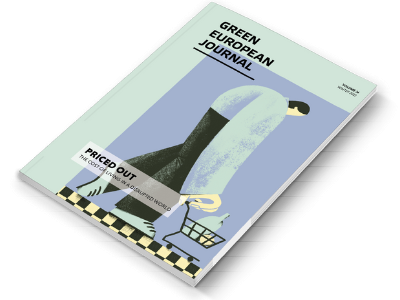Renters often suffer a double burden when it comes to the rising cost of living, paying high rents as well as the price of poor insulation. In Scotland, the entry of the Greens into government went hand in hand with alliances with housing movements. Now their radical ideas are becoming policy.
Energy poverty is soaring across Europe. Even before Russia’s invasion of Ukraine, a quarter of people in the EU could not afford to heat their homes adequately according to the European Commission. This can partially be blamed on the terrible state of insulation in Europe’s housing stock – a problem that is particularly acute for private renters. Renovation (even with generous subsidies) requires a high upfront investment that landlords could instead pour into something with a faster return, such as buying more property. To encourage renovation in private rented accommodation, landlords need incentives. But more than anything, the power imbalance between landlords and tenants needs to be disrupted.

This is where we can look to Scotland for lessons. In 2014, a coalition of different organisations founded Living Rent to influence a Scottish government consultation on housing. The campaign was niche, as were its policy demands such as rent controls, but the group subsequently developed into a national tenants’ union. Over the years, Living Rent established branches across mainland Scotland to organise for the rights of tenants. They used classic organising tactics such as door-knocking and repeatedly made small, tangible wins such as preventing evictions. Their success was matched with growing influence over public opinion. By 2019, polling found that 75 per cent of people in Scotland supported rent controls. The niche had become common sense.
Living Rent was also influencing institutional politics. They spoke at events and lobbied parties such as the Scottish Greens at the same time as winning over party members, who amplified their demands. At the height of the pandemic in 2020, Living Rent gained further public recognition after it successfully pushed the Scottish government to ban evictions. Although a temporary policy, the eviction ban set a new direction for tenants’ rights policy in Scotland – a precedent that only aided the Scottish Greens.
During the 2021 Scottish parliamentary elections, the Greens campaigned on a host of Living Rent demands. The party’s record result led them into power with the Scottish National Party and a cooperation agreement that had the fingerprints of Living Rent all over it. For example, the agreement promises rent controls to be implemented by the end of 2025. In September 2022, with the cost of living crisis increasing the risk of destitution for many, the Scottish Parliament passed a rent freeze coupled with new protections against eviction. The Green Party publicly called for the rest of Europe to follow suit.
While rent freezes and eviction protections are common-sense policies for the welfare of tenants during the cost of living crisis, a more long-term approach would be rent controls. And this goes beyond the price of rent. For example, with 75 per cent of EU buildings deemed “inefficient” in terms of insulation, governments could refuse to allow rent indexation unless properties have sufficient insulation. The Overton window for interventionist policies has shifted thanks to the cost of living crisis. Greens around Europe would do well to take advantage and push through radical policies that would previously have been unthinkable. What the Scottish case demonstrates is that, with strong community organisations doing the work on the ground, the Greens don’t have to do quite so much of the heavy lifting.
This piece is part of a series in the edition on how Greens in government in Austria, Belgium, Croatia, France, and Scotland are responding to the social crisis.

